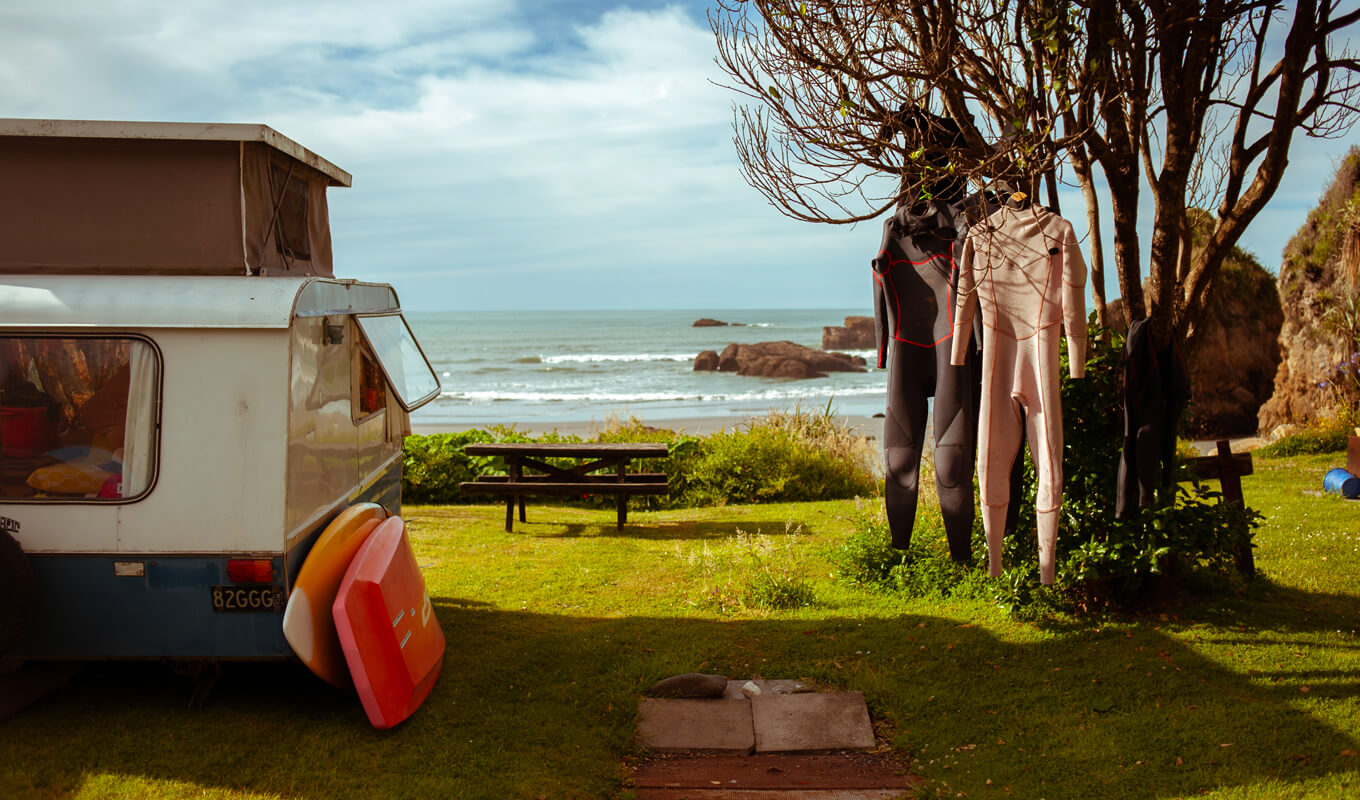Tu carrito está vacío

Whether you’ve spent a few hundred, or a few thousand dollars on a stand up paddle board, it’s important that you take proper care of your board and all your additional SUP gear.
The harsh outdoor elements can cause major problems for SUPs, so if you’ve just bought a new paddle board, or you need a reminder of how to properly care for your current board, then keep on reading!

Paddle boards are a big investment and you want to keep them in tip-top condition so they look and perform their absolute best.
Taking the time to care for your board after every use or before storing it away for long periods can prolong the lifespan of your SUP, giving you the most use for your money.
After you’ve finished paddling for the day, it’s best to rinse off your SUP and dry it completely before placing it in storage.
If you store your board in a board bag and place the board in wet, mold and mildew will form and potentially damage your board. Make sure to properly wipe down your board and allow it to properly dry before putting it away.
If your board has been in saltwater, it is even more important to rinse it thoroughly because the salt can corrode materials and weaken any seams.
If you want to give your board a proper clean once in a while, mix a solution of water and dishwashing liquid or purchase a soap specifically made for paddle boards and gently scrub the deck until clean.
Some paddle boards have metal details like the fin box. To prevent rust from building up over time, take some WD-40 or household oil and coat all the metal pieces on your board.
Rust usually isn’t a problem on SUPs as the metal parts are made of marine-grade stainless steel, but it doesn’t hurt to give them some TLC every few years.
Dings, holes, and scrapes are bound to happen from the average use of a SUP. Minor damages to your board can be fixed easily and don’t need to be seen by a specialist.
However, for bigger dents, it’s best to take your board to a professional immediately to prevent any further damage.

If water seeps into the foam core of your traditional board from a hole or ding, your board will lose its performance and buoyancy.
If there are any holes in your inflatable SUP, the air will seep out and deflate while you’re out on the water.
It’s a good habit to check your board before and after each outing to spot any problems as early as possible.
If you have a traditional paddle board, vent plugs help reduce the risk of damage to your board by built-up air pressure that forms inside its core.
The foam core of a board is sensitive to heat and if it gets too hot, the foam inside starts to expand and can crack the board from the inside out.
If your board has screw-in vents, unscrew the vent plug to allow the board to equalize. Make sure to screw the plug back in before you head back out paddling.
If your board has maintenance-free vents, you don’t need to worry as they allow air to pass through the board without letting water in.
Check the vents and vent plugs are working properly every few months.
Paddle boards tend to be a seasonal activity for most, so it’s crucial that you’re storing your board correctly in the months that you aren’t using it.
The ideal storage place has little sunlight, heat, or moisture. Sunlight and moisture damage the shell of your board, whereas heat can damage the core of your board.
If your board does get too hot, it could delaminate. Delamination is where the fiberglass peels away from the foam core, causing splits and cracks.
Another thing to think about when placing your board in storage is keeping it away from any objects that could potentially fall on top of your SUP or cause pressure dings when they’re rested on.
Board bags can be used to prevent scratches or dings from happening to your board, but make sure you leave the bag unzipped to prevent heat buildup.
Your SUP gear is as equally important as your paddle board and needs care and maintenance all year round.
Although they aren’t as big of an investment as the board itself, having to replace additional gear because of poor maintenance can add up over the years and can easily be prevented.

Life jackets and personal flotation devices (PFD) are important pieces of kit to use when you are out paddle boarding.
PFDs are designed to keep a conscious person’s head out of the water, whereas life jackets are designed to turn an unconscious person from face down to face up.
You wear your PFD every time you head out paddling, so you want to keep it clean, right?
Here is the best way to clean your PFD:
Like with any outdoor gear, life jackets can start to smell over time, especially if they aren’t dried out properly before being stored away.
To eliminate odors, there are a few steps you can take:

Depending on the water temperature in which you’re paddling, you’ll either be wearing a wetsuit, drysuit, or an average swimsuit.
Wetsuits are made of neoprene that is thick and spongy. Tiny bubbles of nitrogen in the material trap the heat made from your body and act as a buffer between you and the cold water.
Wetsuits allow water to enter the suit, whereas drysuits are waterproof and keep you dry. The names kind of give it away, don’t they?
If you don’t take proper care of your wetsuit or drysuit, you’ll definitely know about it when you’ve paddled out in the water, and the cold starts to set in.
If you’re lucky enough to be paddling in warm temperatures, swimsuits tend to be the SUP attire of choice. Swimsuits can be thrown in the washing machine with your regular laundry, but it’s a good idea to check the care label before doing so.
If you happen to find a tear or rip in your suit, you can easily repair it at home with the help of scotch tape or repair adhesive.
Wetsuits, drysuits, and swimsuits should be rinsed with clean water to rid them of sand, dirt, and other debris. Allow the suit to dry out of direct sunlight and never store them wet.
No matter what type of paddle you have, they’re all fairly easy to maintain. You want to make sure you rinse your paddle off after every outing, secure it properly when in transport, and store it out of direct sunlight.

Waterproof bags, also known as dry bags, are flexible containers with a roll-up closure that keep your possessions inside dry.
If you regularly take expensive items out like your phone or camera, you want to ensure the bag is in perfect condition. One small hole or rip could let in water and ruin your equipment.

Your board bag not only helps in the transport of your board, but it also helps protect your stand up paddle board from damage when in storage.
If your bag has a tear in the material, you can repair it by stitching it up. Alternatively, if you aren’t handy with a sewing machine, you can take it to a tailor.
SUP Anchors are made to be in the water, therefore taking care of them is easy.
Much like most of your gear, it’s best to rinse the anchor off with clean water after use. If your anchor rope is dirty, it can be soaked in a bucket of water and cleaner.

If you prefer using an electric pump over a manual pump, there are a few things you need to keep in mind when using and caring for it.
When inflating your paddle board, do it away from water. Electric and water don’t go well together and it can result in electrocution or the pump breaking entirely.
Electric pumps can overheat, especially if they’re used to inflate numerous boards. Taking breaks in between boards to allow the pump to cool will prevent it from overheating.
Keep your pump away from mud, sand, or rocks as they can get inside the pump and affect its performance.
Most of your stand up paddle board gear should be cared for in the same way, and it’s a good idea to follow these tips when packing up your board and gear after a day out on the water.
All gear should be rinsed off with clean fresh water after every use. Abrasive elements like sand or small rocks can cause pressure damage or tears to your equipment.
If paddle boarding on oceans, it is even more important to rinse off your board. The salt in the water can dry out and eat away at your board’s materials.
The sun and outdoor elements can cause ultimate destruction and discoloration to your stand up paddle board that sometimes is beyond repair. UV rays harm our skin in the same way they harm a paddle board.
The sun can overheat the board, causing delamination. When delamination occurs, in traditional paddle boards, the fiberglass or epoxy shell separates from the foam core.
If you have an inflatable paddle board that is left out in the sun, it can cause the seams to fail due to pressure increase.
When placing your paddle board and gear in storage, follow these tips:

Inflatable SUPs can be deflated and inflated whenever you need them. They are great for people living in small apartments with limited storage space.
These tips will help keep your iSUP in its best condition:
The care of a foam core SUP is similar to an iSUP and only really differs in the storage and transportation of the paddle board.
Follow these tips to keep your foam core SUP in its best condition:
Taking care of an inflatable is fairly simple, and there are a few steps you can take to keep your board in its best condition.
Rinsing off your stand up paddle board with clean water is recommended after each use.
Washing your board and drying it with a towel will prevent things like saltwater from eating away at the materials of the board.
Clean an inflatable paddle board with clean water or by using a soap specifically made for inflatable boards or inflatable boats. Run a cloth over the board and allow it to dry fully.
You can leave an inflatable stand up paddle board inflated if it is kept out of sunlight.
If you want to leave your board inflated, it is best to release some air in case expansion happens while it’s stored away.
If you plan to store the board for a long period of time, it is recommended to deflate the board entirely to prevent damage.
Los comentarios se aprobarán antes de mostrarse.